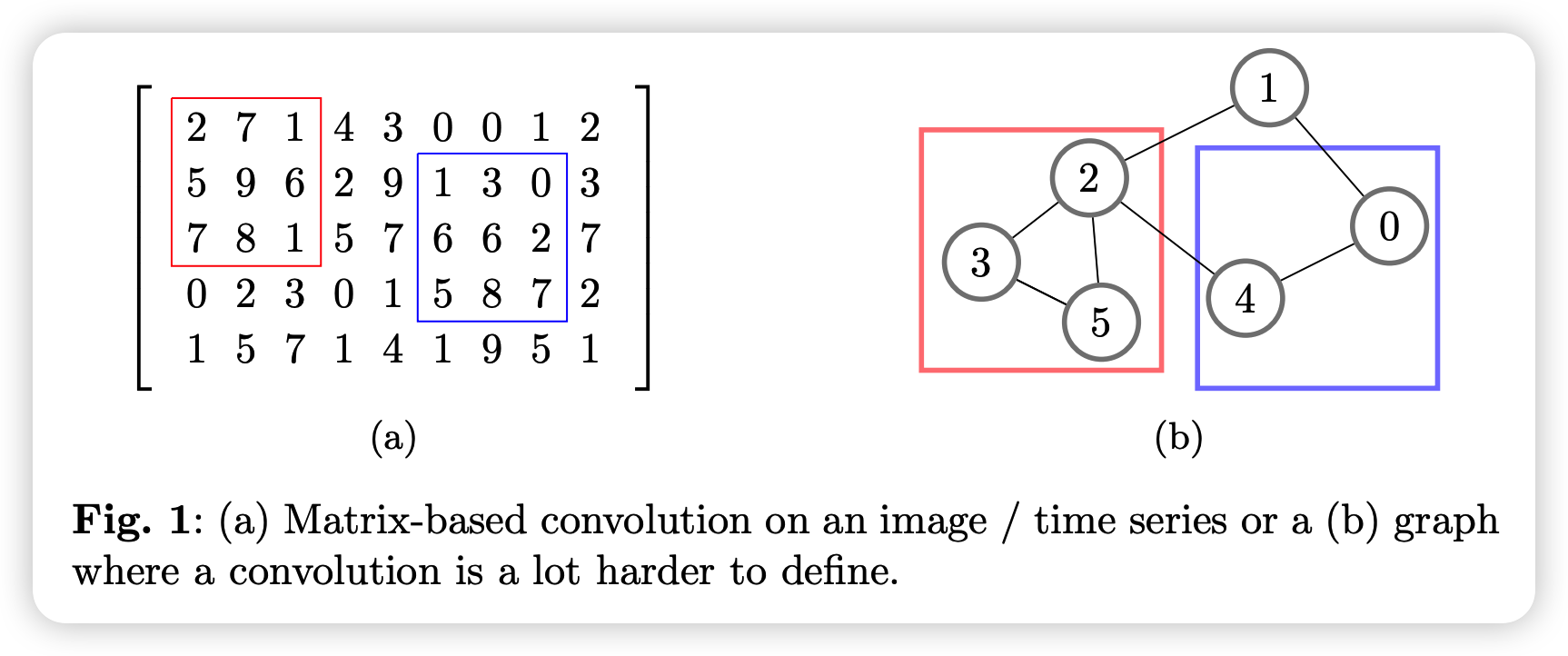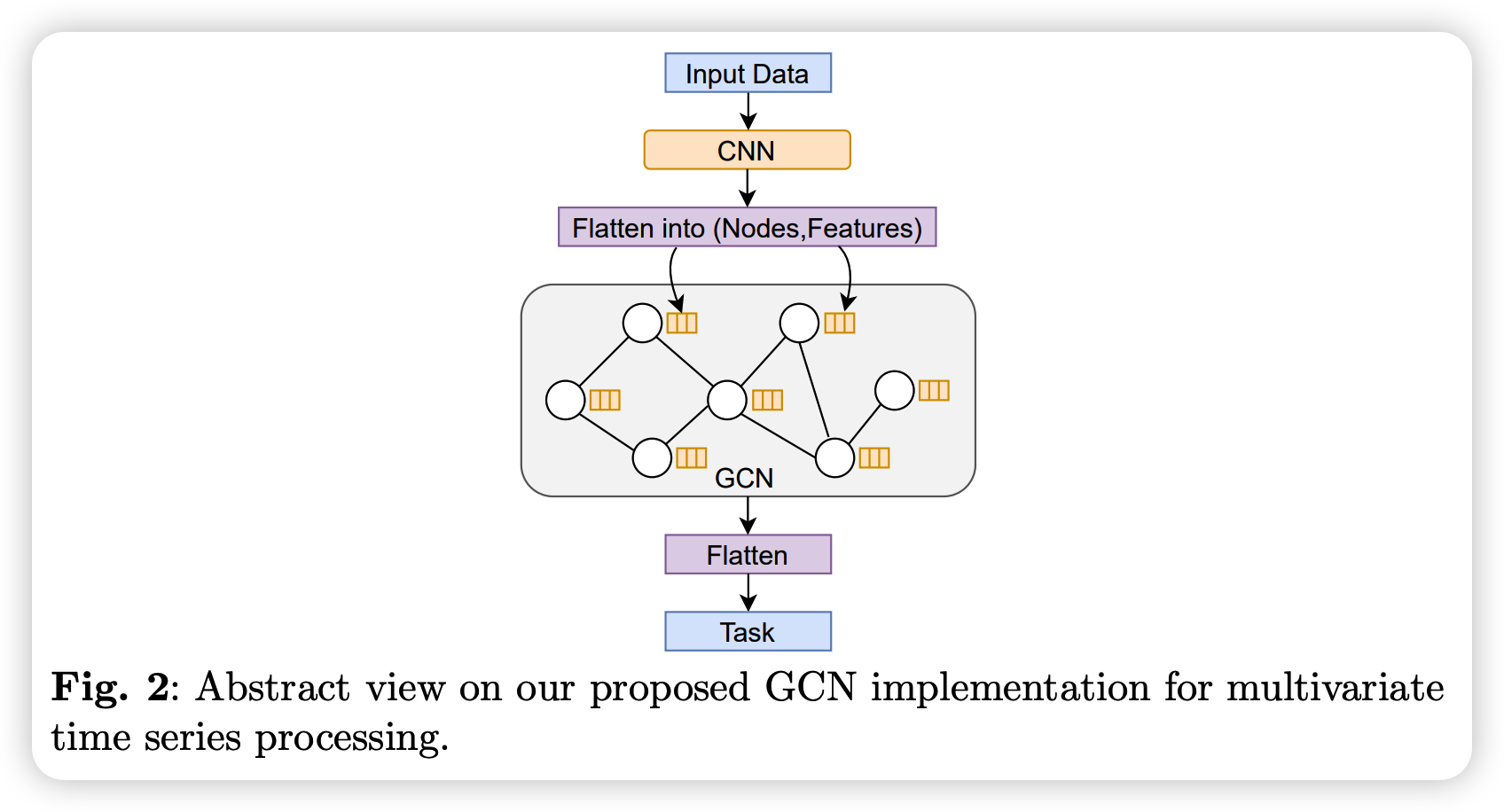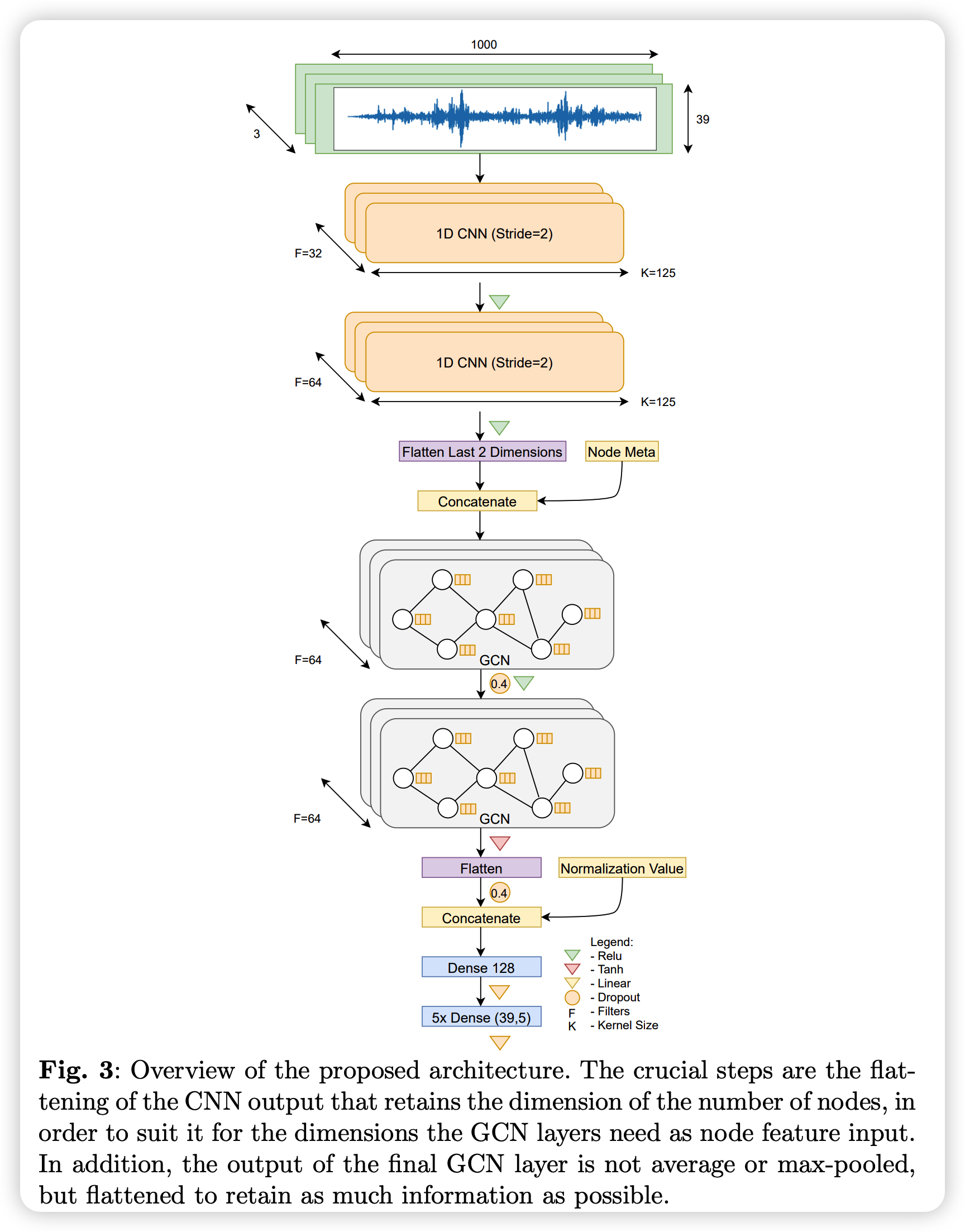Multivariate Time Series Regression with Graph Neural Networks (20202)
Contents
- Abstract
- Introduction
- Related Works
- Deep Learning on Graphs
- GNN
- GNN for Time Series Analysis
- Deep Learning for Seismic Analysis
- Method
- Basic Model Architecture
- Model Implementation
- CNN for Feature Extraction
- GNN Processing
- Model Training
0. Abstract
Spatial-Temporal GNNs for TS forecasting
-
(1) spatial info can be exploited by graph structures,
-
along with (2) sequential info
1. Introduction
combine the capabilities of ..
- (1) CNN (feature extraction)
- (2) GNN (spatial information)
test our proposed models on network-based seismic data
2. Related Works
(1) Deep Learning on Graphs
standard CNN convolutions are not applicable to graph-structed data, due to non-euclidean nature

(2) GNN
there are 2 main classes of methods that GNN us
- (1) spectral methods
- (2) spatial methods
Spectral methods
- use eigenvectors and eigenvalues of a matrix, with eigendecomposition
- perform convolutions with the
- Graph Fourier Transformation
- inverse Graph Fourier Transformation
Spatial methods
- use message passing
- look at local neighborhood of nodes
- perform calculations on their top-k neighbors
- node aggregation/update function \(f\)
- node representation : \(Z = f(G)X\)
- \(G\) : adjacency/Laplacian matrix
- \(X\) : node features in \(G\)
- node representation : \(Z = f(G)X\)
Spatial methods :
- focus more on connectivity
Spectral methods :
- focuson eigenvalues & eigenvectors of a graph
GCN ( Graph Convolutional Networks )
propoagation rule :
- \(H^{(l+1)}=\sigma\left(\tilde{D}^{-\frac{1}{2}} \tilde{A} \tilde{D}^{-\frac{1}{2}} H^{(l)} W^{(l)}\right)\).
Notation
-
\(H^{(l)} \in \mathbb{R}^{N \times D}\) : matrix of activations of the \(l\) th layer,
-
\(\tilde{D}=\sum_{j} \tilde{A}_{i j}\) : dgree matrix
-
\(\tilde{A}=A+I_{N}\) : adjacency matrix of the undirected graph \(G\)
( with the added self-connections \(I_{N}\) )
(3) GNN for Time Series Analysis
most of proposed models combine GNN + RNN
- focus on modeling long-term dependencies
However, when the task is classification / regression ….
\(\rightarrow\) there is a lack of long-term dependecies
(4) Deep Learning for Seismic Analysis
for waveform analysis…CNN has been applied
3. Method
(1) Basic Model Architecture

3 key points
- (1) to obtain node features..
- use 1D-CNN
- (2) GNN of \(n\) layers
- for processing these feature vectors
- (3) flatten entire GCN feature output
- put on dense layer for desired task
- average/max pooling (X)
(2) Model Implementation
CNN for Feature Extraction
1D-conv
-
second block ( in the pciture above )
-
TWO 1d-cnn layers : act as feature extractors
-
purpose : learn temporal patterns
-
last 2 dimensions of the second CNN are flattened
\(\rightarrow\) make the dimension fitted for GNN layers ( input : (\(N,F\) ) )
-
Notation
- \(N\) : number of nodes
- \(F\) : 1-d vector of node feature \([x_1, … x_n]\)
GNN Processing
next layer: GNN layers ( which uses GCN )
(3) Model Training

